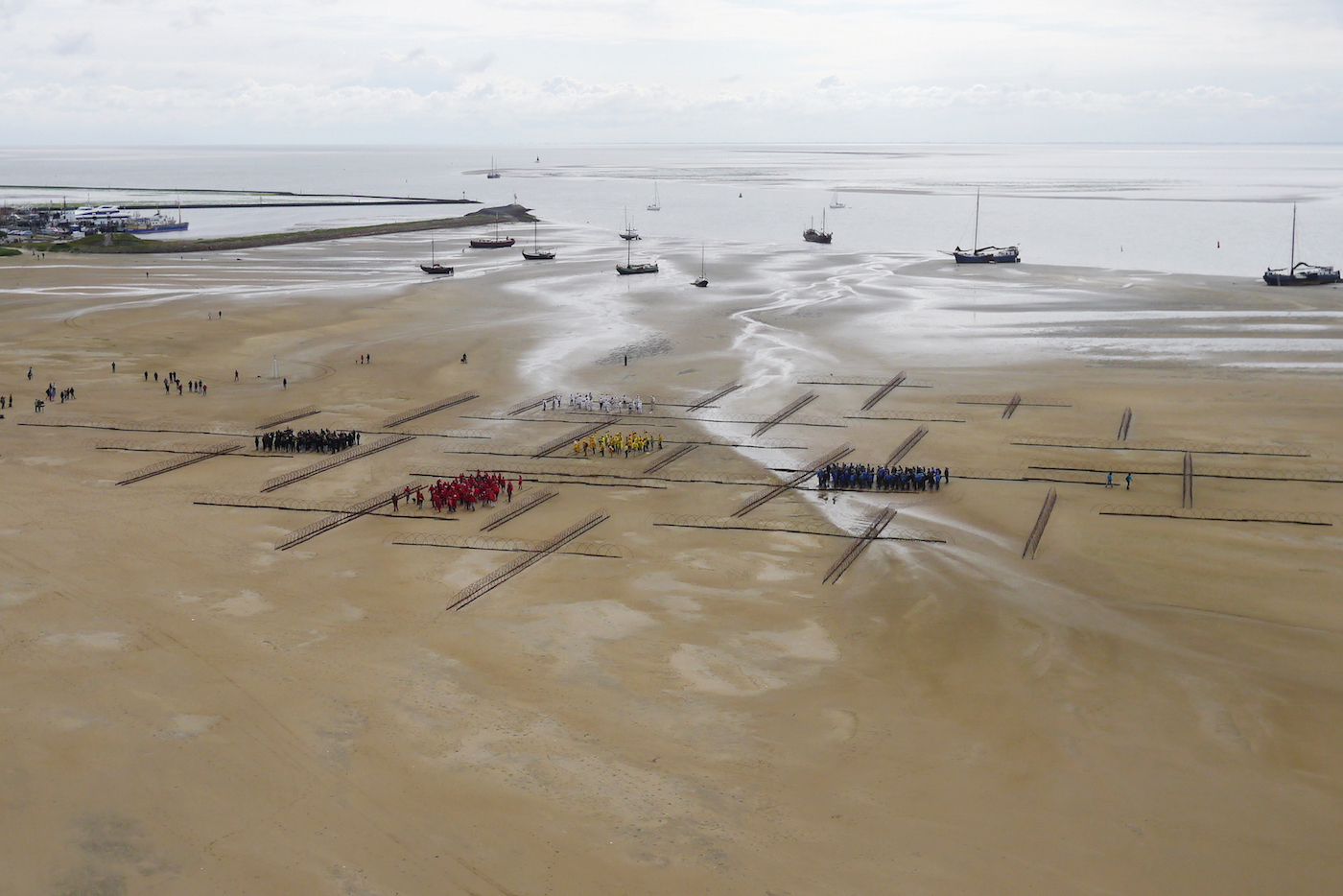Terp fan de Takomst can be translated as “Mound of the future”. Mounds (terpen) are an important feature of the Frisian landscape. Their long and rich history in the area appeals to the imagination, while they also raise questions when it comes to archeological details and serve as an inspiration for art, culture, and future developments in the area.
Various people have dreamed of creating the Terp fan de Takomst (‘Mound of the Future’) for some time: a new mound outside the dikes, for research and educational purposes, as a model for the original design, to experiment with new and old brackish crops, and as a place for reflection and contemplation.
The village of Blije has taken the initiative to actually build its own Terp fan de Takomst (‘Mound of the Future’). The village, which feels closely connected with the mudflats, states in a report in which it outlines its vision, “We want to face the Wadden Sea again as we live our everyday lives.” A central element of their plan is to build a new mound outside the dike, at the level of Blije village. Their objective is to create a new place of inspiration, to attract people to the village and the Wadden coast, to share ancient tales with one another, and to create new narratives.
A partnership of Dorpsbelang Blije, It Fryske Gea, the Terpencentrum (a scientific research body part of the Groningen Institute of Archaeology, which is affiliated to Groningen University), Province of Fryslan and Sense of Place, has established a project group with the objective of turning this dream into a reality.
Created by the Observatorium artists collective, the design for the Terp fan de Takomst project is conceived as an ‘artwork’ which appeals to the imagination of every stage of the development process, and serves as a destination for residents and visitors at each of these stages: a ‘Growing Mound’.
Mounds range in size from narrow (5 metres) and low (1 metre) to wide and high (up to 10 metres). Depending on their size, mounds can support anything from one house to a small hamlet to a church, and through the Groeiende Terp (‘Growing Mound’) the Observatorium artist collective wants to visualise and make people experience this process of stacking different layers on top of each other.
Designers are carefully outlining the future shape of the Mound using piles and a spiral pattern, starting at the bottom and ending at the top. The various stages are arranged horizontally, rather than vertically, thereby ensuring that each stage in the growth is and remains visible. One of the mounds will support a house and includes a core platform; a knoll will be added complete with a wall, and the drawing of the piles will ultimately result in a fully developed mound. The beginning is marked by a platform and the end by a wall (as a cross-section) of wood piles at the eventual height.
The clay will be supplied over the years, until the vision has been fully realised and the mound is exactly as it should be.
Realisation: July-October 2021

This new walking route will take you along a site known for a memorable episode in Friesland province’s recent history.
When a huge storm surge pushed seawater into the earth outside the dikes of the village of Marrum on the night of October 31, 2006, 150 horses ended up stranded on a ‘dobbe’ (a type of small island) behind the dike. After a joint effort involving wranglers, firefighters, veterinarians, animal welfare officers and the Dutch Army had failed to bring the animals to safety, six local women on horseback successfully herded all but one of the horses across the path. It was an extraordinary event, and the story of the Marrum Horse Rescue is etched in the collective memory of Dutch nature lovers and horse aficionados alike. A memorial was subsequently erected in 2011 to mark the bravery and ingenuity of these women.
At the initiative of Plaatselijke Dorpsbelang, a local interest group, a new walking route was designed that leads to the site of the rescue and which connects to the walking paths behind the dikes. The Noordoost aan het Wad project, which was launched in 2016 by the Agenda Netwerk Noordoost (ANNO) network of the communities of Dantumadiel, Dongeradeel, Ferwerderadiel and Kollumerland, is a development partner in this project.
On the 19th of July 2019 a very special art-piece by Marcel van Luit was installed at a very special location: right in the middle of the ‘dobbe’. This piece of art was made possible by a lot of partners and sponsors: De Versterking, STICHTING SIEBOLT FOUNDATION, Fries Paardenstamboek, Stichting Faderpaard en Gemeente Noardeast Fryslân, Wilcovak, Neenah Coldenhove, Chromaluxe en Epson.
‘Noord-Fryslân Bûtendyks’ consists of summer polders, ‘dobben’, salted grasslands, mud fields and salt marshes. The area is over 4180 hectare. You will find many birds here, including meadow birds like the redshank and yellow wagtail. They are joined in winter by the brent goose and barnacle goose, finding their food for the winter.
‘Dobbepaarden’ is a project in collaboration with Doarpsbelang Marrum-Westernijtsjerk and It Fryske Gea.
Realisation: 1.12.2018 – open until March 15 and after July 15
Location: Zeedijk 8, Marrum (from here you can find the sign on the dike which marks the start of the route)
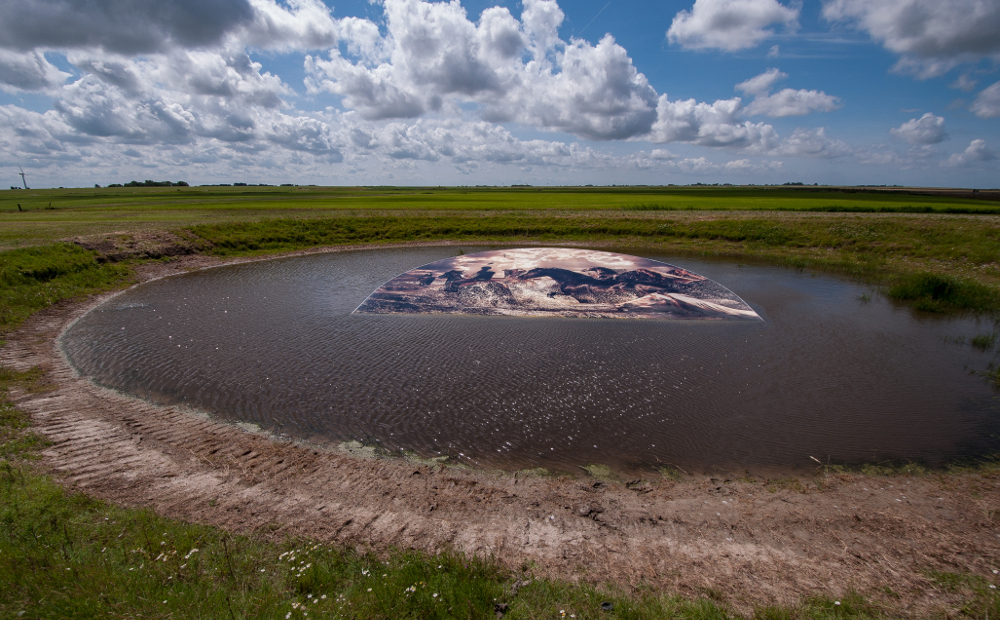
In 2018 the photo project ‘Bildtstars and Eigenheimers’ kicked off with ten giant portraits of local potato farmers along the Wadden Sea coast of Northeast Friesland. You will find the portraits – by photographer Linette Raven – on farm roofs, walls and barns in the middle of the landscape for at least five years. Installed on their own farms, the potato farmers and their families become visible. What story do they want to tell about the land they are working on? About their culture and their lives? Discover it on location – surrounded by all elements and at your own pace – guided by the ‘Bildtstars and Eigenheimers’ experience route: an expedition through a unique area. Since June 2020, zeven more photos were added to the route.
Portraits
The experience route ‘Bildtstars and Eigenheimers’ can be downloaded through the website of Visit Wadden‘. It’s also available at routes.nl. The route guides you along seventeen monumental photo installations that change your perspective on the landscape. From afar the portrayed potato farmers gaze over the fields. What moves these hard workers? Listen to the audio files through the website to learn more about their passion for the land, farm life and the potato. Information signs at all farms welcome you on their yard. The route starts in Hallum and ends in Anjum. By bike it takes about two hours, but you can also visit and admire the photo installations by car of course.
The beautiful stories about the farmers are written bij Ellen Schat.
Bildtstars & Eigenheimers promo from Sense of Place on Vimeo.
Bildtstars & Eigenheimers song by Jan de Vries
Potato eater meets potato grower
With ‘Bildtstars and Eigenheimers’ Sense of Place restores the relationship between potato eater and potato grower; all of a sudden local potato farmers are standing face to face with the audience and play the leading role in their own landscape. The ten portraits along the Wadden Sea coast of Northeast Friesland are only the beginning of the project.
In the next years to come many more large portraits will follow at surprising locations along the Wadden coast of Groningen. ‘The landscape is the people and the people are the landscape’, says photographer Linette Raven. You just have to get to know these people.
Are you coming along on an expedition? From now on you will not just eat fries or potatoes without hearing the wonderful stories!
Location: From Firdgum to Anjum
Bildtstars & Eigenheimers is made possible by:
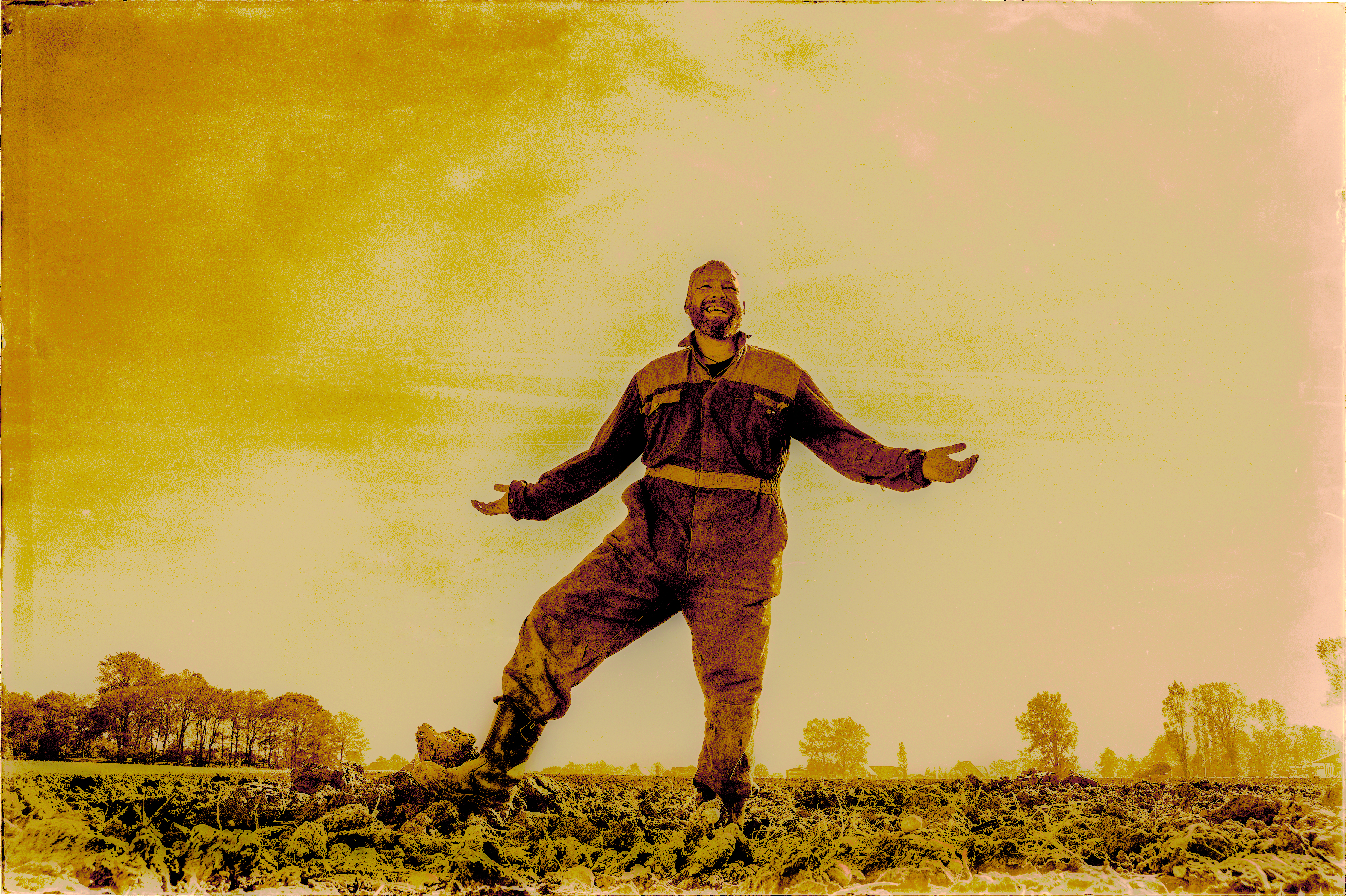
De Streken is a wooden structure created by the visual artist Marc van Vliet that changes with the tides.
Based on the sun and the tidal forces (and the moon), the artwork’s form change with the tide. This almost imperceptible variation occurs twice a day.
Visitors will be able to reach the wooden artwork on foot: during ebb across the mudflat, and during tide across the 150-metre-long pedestrian bridge. It is a meeting place that offers a different perspective on the vastness of the Wadden landscape by the hour and the day. The visitor’s gaze is directed outwards during the ebb tide, and inwards during the flood.
De Streken is realized in collaboration with Oerol and in 2021 installed until 7 July. The installation had to be dismantled earlier due to storm damage. Nature had decided. On the night of Tuesday, July 6, a south-westerly storm and spring tide came together, damaging the installation.
With today’s knowledge, a semi-permanent version is made for next year that is higher and stable enough to last three months in 2022.
About Marc van Vliet
Born in Den Bosch in 1961, this visual artist, theatre producer and designer is a resident of Overschild in Groningen province.
Self-taught in several disciplines and having started out as a designer, Van Vliet has risen to prominence over the past 17 years mainly through the location performances and installations of the Tuig theatre group with which we has been affiliated, which are characterised by a hybrid of images, motion and sound. In recent years, he has tended to focus on landscape installations.
Realisation: June 2022
Location: Oosterend, Terschelling, end of Perkweg

‘Wachten op hoog water’ (Waiting for high water) is a statue by Jan Ketelaar. The statue consists of two metal welded 5 meter high women. One big woman, the other one slender, looking out over the sea. You can position yourself in-between these women, and take their hand. The statue represents the search for balance and exchange.
The big woman was installed in December 2018, the year of Leeuwarden-Fryslân European Capital of Culture. On September 16th, 2019, she was accompanied by the slender woman. Watch the aftermovie by filmmaker Jonathan Doornenbal here:
Jan Ketelaar is an artist from Friesland. In 2002 he graduated from the Minerva Academy, cross-disciplinary sculpture. By the name of ‘Potzenmakerij Ketelaar’ he makes so called ‘potzen’: serious jokes. He exhibited in e.g. Portugal, Bremen and New York. Several times he travelled (by fork truck) through the Netherlands with his very tall statues. In 2014 his Royal fence was placed around the 1st Royal lime-tree in the Netherlands. The fence was a bench, shaped of lime-tree leafs.
Apart from being a sculptor, he also writes and publishes poems. In 2008 and 2012 he was in the final of the NK Poetry Slam. Last year his first bundle was published: “Of a man who thought, I don’t want to think anymore”. As a “potzenmaker’ he organizes literary and cultural meetings. He is also a planner. In 2014 the policy regarding the search for lapwing eggs in Smallingerland changed on his initiative.
Location ‘Wachten op hoog water’
Navigate to Grandyk 9, 9151 AE, Holwerd. You’ll see the statue from there and can reach it by foot.
Wachten op hoog water is made possible by:Douma Staal, RE-ON LAS lastechniek, LSC Ladder & Steiger Centrale, Mannen van Staal, Paviljoen De Walvis, Hotel De Gouden Klok, Eens, Judith Nieken and:
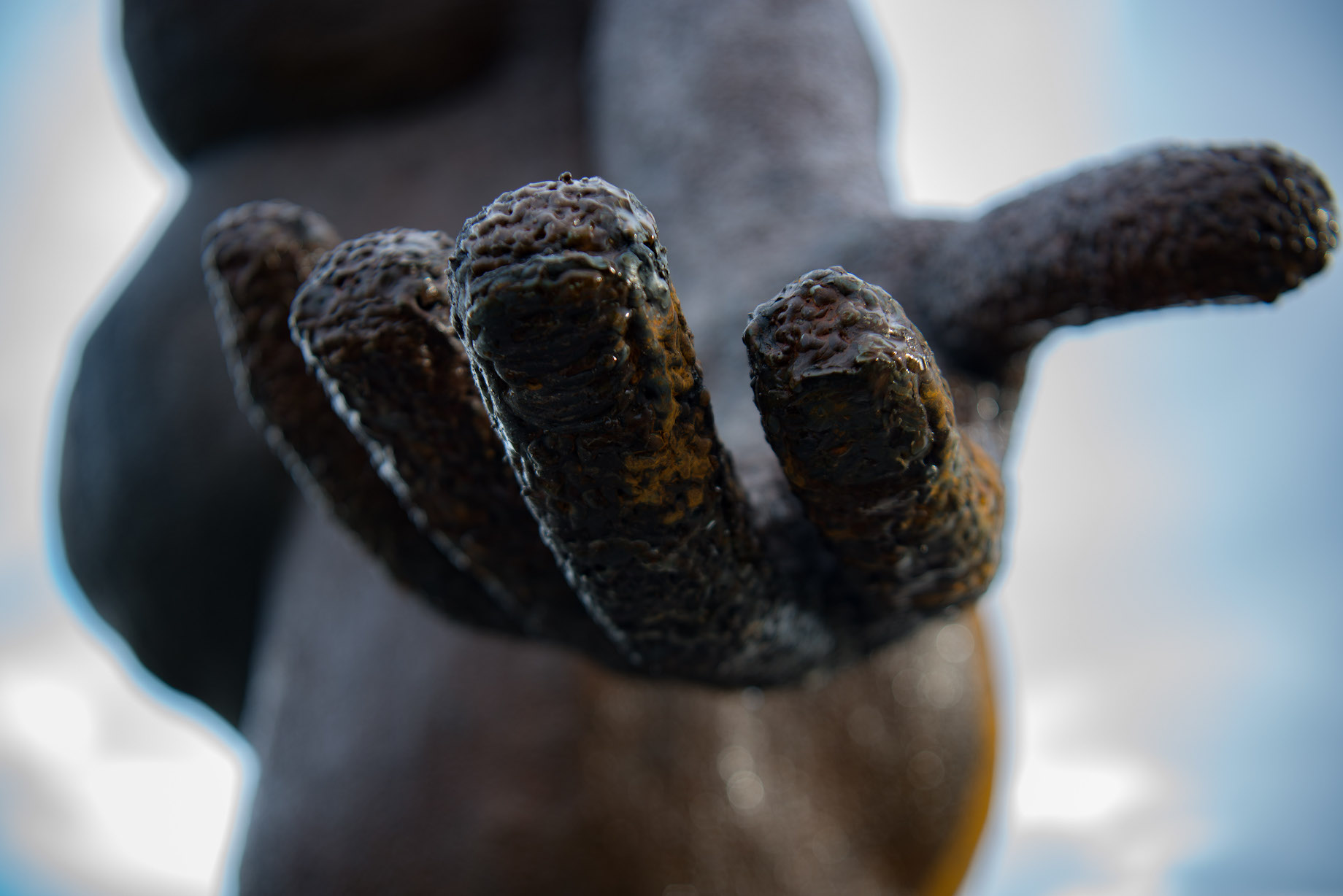
Moving Landscapes is a traveling exhibition, a Sense of Place initiative of artistic director and pioneer Joop Mulder. The six landscape artworks of Moving Landscapes manipulate, affect and navigate the perspective of the viewer. They make the invisible visible and invite audiences to make a new journey of discovery through the landscape and create a fresh look at the Wadden area.
The existing installation Camera Batavia by Arjen Boerstra is the anchor and inspiration of the project. Around it a group of artists, mostly no strangers to Oerol and Sense of Place, has been invited to create five new works. They have become: Level by Bouke Groen, Tumbling in Time by Sofie Doeland, Here We Are by Theun Mosk, Draaiing by Hart van Veen and Luw by Firma Kluit.
Moving Landscapes has been realized by Sense of Place and Oerol, in co- production with the Museum Kunst der Westküste on the German Wadden island of Föhr. After Oerol 2019 (14th July to 23th of July 2019), the exhibition travels to Föhr to celebrate the museums ten-year anniversary. It can be seen there from 29th of July to 29th of september 2019.
Read more about the current exhibition here.
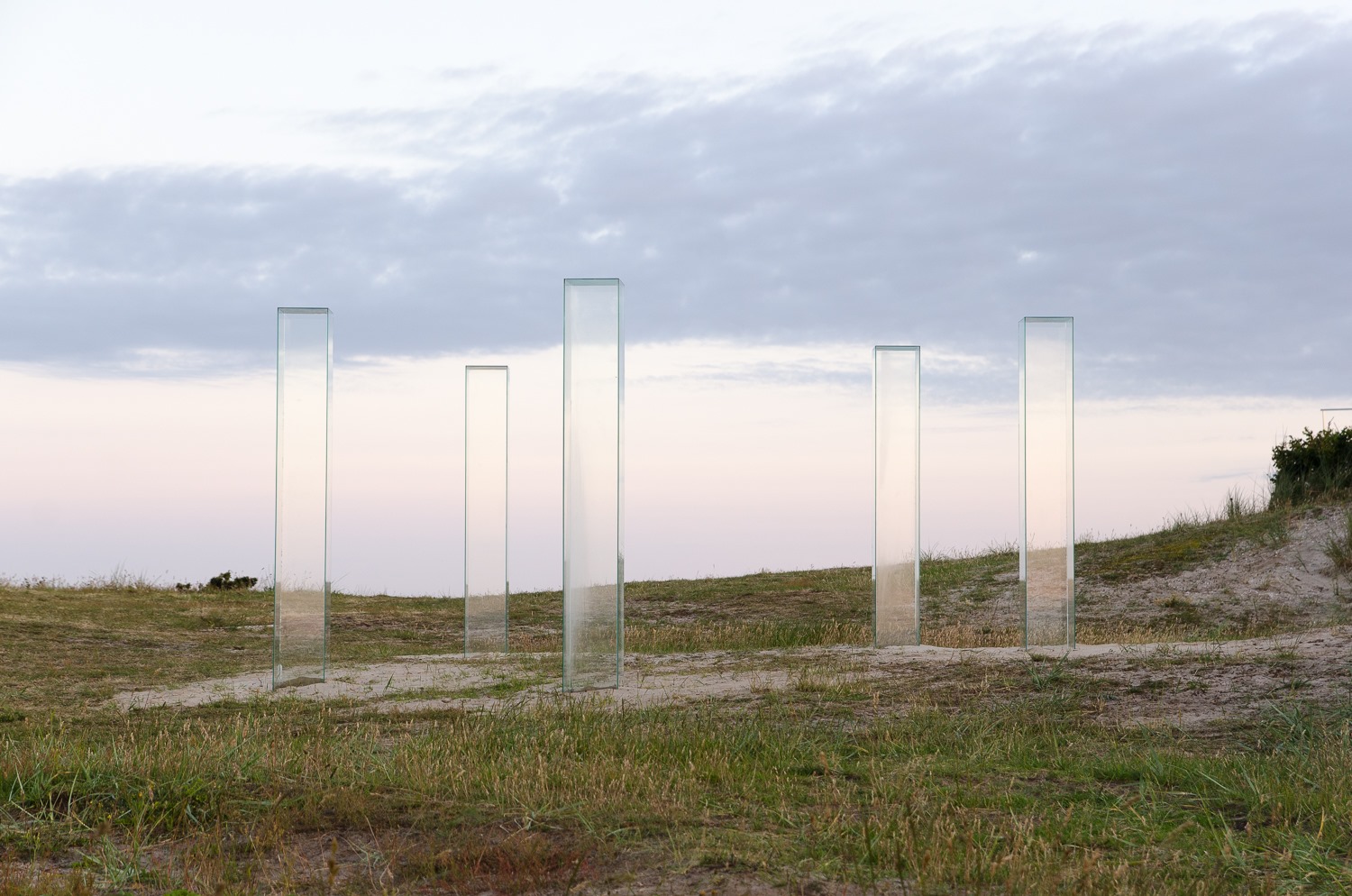
The De Nollen landward dune area in Den Helder is home to the ‘landscape of the imagination’. De Nollen is an existing art project featured in the Sense of Place programme. What once began as an artistic experiment in this old, neglected area has evolved into the life’s work of the artist R.W. van de Wint (1942-2006). He spent 25 years working on paintings, steel sculptures and large structures which are closely entwined with the dune landscape. The location and the image imbue the picture as a whole with meaning. Combining simplicity with complexity, his work is possessed of a real vitality that captures the viewer both visually and physically. In a world that’s changing at an increasingly faster pace, the artist sought to evoke a world of elementary images which have been the same for centuries: the light, the transition from light to dark, and the experience of colour.
This garden created by Van de Wint is reminiscent in style to the Henry Moore Studios and Gardens in Hertfordshire, England; Ian Hamilton Finlay’s Little Sparta garden at Dunsyre in the Pentland Hills near Edinburgh, Scotland; and the art collection at Museum Insel Hombroich near Neuss, Germany.
Reindert Wepko (Ruud) van de Wint (1942-2006) withdrew into the old landward dune area De Nollen after 1980, having stopped exhibiting in European museums at that point. De Nollen was to become his life’s work. Van de Wint is renowned for the paintings which grace the halls of the Dutch House of Representatives and ceiling frescos in the Groningen City Hall, as well as the working quarters of former Queen Beatrix of the Netherlands at Noordeinde Palace. In addition, he created around 35 sculptures, which are spread throughout the Netherlands. In 2002, an exhibition of his work was staged at the Kröller-Müller Museum in Otterlo: R.W. van de Wint. Clair-obscur. Seven Statues.
For more information: projectdenollen
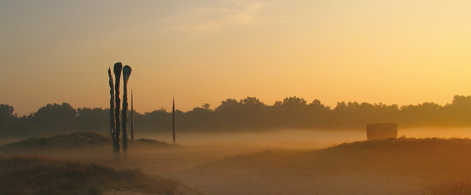
The ‘Men of Holwerd’ installation, created by artist Linette Raven, is a tribute by Sense of Place to the four initiators of the ‘Holwerd aan Zee’ (‘Holwerd by the Sea’) project. The installation depicts a sea lock with flowing water, featuring four life-size portraits of men at the interior of the lock. Visitors walk through a corridor of potato crates and stand eye to eye with these extraordinary men.
Through the ‘Holwerd aan Zee’ project, the initiators seek to break the negative spiral of population loss and economic decline in the village, proposing that there must be a breach in the dike in order to restore the link between the Wadden Sea and the hinterland. Residents, hydraulic engineers, businesses, artists and nature lovers are all keen to devote their talents and energy to the project, which represents a dynamic interaction between man and nature, water and land, and old and new. It presents both an economic opportunity for the village and the area as a whole, and an ecological opportunity for the Wadden.
A portrait photographer who likes to tell the story of ordinary, everyday people through her pictures, Ms Raven both initiates her own art projects and collaborates with others. One of her best-known works is Fan twa kanten (‘From Two Sides’), which features 182 portraits of residents of Terschelling island, presented in a life-size format in an outdoor location. She is also renowned for Pioniers van de Wieringermeer (‘Pioneers of the Wieringermeer’), featuring portraits of the first 40 residents of this polder. For further reference, see the Sense of Place project ‘Bildtstars en Eigenheimers’ (‘Bildtstars and Eigenheimers’)
Realisation date: June 2018
Locatie: Holwerd
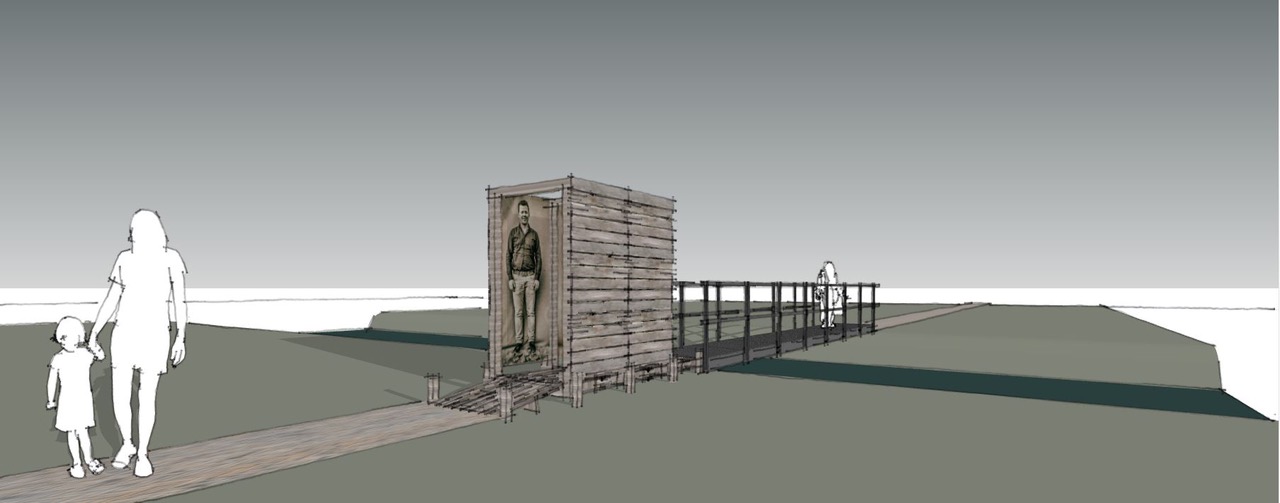
The typical Dutch landscape with its new tight polders, dairy industry, potatoes and carrots inspired Nienke Brokke to do something with it. The artist wants to return the ‘voluptuous’ capriciousness of nature to this industrial agricultural landscape. The shapes of round buttocks in a literal ‘dike body’ seemed to her to be a nice contrast to the generally straight, tight dikes, while the monoculture of the vast plowed fields requires extra attention to biodiversity for birds and insects. Nienke sees a large, voluptuously shaped dike, overgrown with herbs and grasses. A breeding ground for insects.
The Dame
In the vast Frisian polder landscape, parallel to the austere Seedyk, a large reclining nude rises, covered with herbs and grasses.
It is large, +/- 60 meters long, locally 8 to 12 meters high at the hip and shoulders; like a voluptuously shaped dike. Her ‘fertile’ shapes refer to the arable land, to where food is grown. Associations with big buttocks, full breasts, milk and real butter are legitimate. Like a patroness, she lies there as a ‘dike body’ in the landscape. Just as the sea defense provides safety, it offers biodiversity in the arable land that is mainly dominated by monoculture. Dijk van een Wijf will also be a research project into how dikes in the Netherlands can be sown more sustainably and bio-diversely.
This research is taking place in collaboration with Van Hall Larenstein, Radboud University, the municipality of Waadhoeke, the Province of Fryslân, Bouwbedrijf Dijkstra Draisma and Cyril Liebrand of EurECO Ecological Consultancy, communities and nature organisations.
About the shape
The Dame lies stretched out on her side, turned in on herself. The shapes rise from the ground like a natural curve and the posture is at rest, relaxed. Her face is turned to the earth as if she is just rising from her sleep. The varying length of the herbs and grasses on the skin of the sculpture will influence the shape. It will make the contours softer or more pronounced. Recognition of the image is very important. The biodiverse vegetation is a maximum of 70 cm
About the location
Dijk van een Wijf is being realized near the village of Oosterbierum. The linear character of the polder and also the linear nature of the artificial sea defenses provide the dike with the right contrast and is therefore a perfect location. The large scale of the landscape does not allow the dike image to clash with its surroundings; instead of being a giantess, she takes on a human scale again in this landscape. For tourists visiting the Frisian North Coast, the location offers a nice resting point to admire from the Sedyk Dijk van een Wijf.
The visual work of artist Nienke Brokke always has a narrative element. The study of theater design at the Rietveld Academy has contributed to this.
As a ‘Gesamtkunstwerk’ in theatre, Nienke likes to work with multiple art disciplines that together form a whole. Because of that narrative side, Nienke Brokke designs educational projects in addition to land art and theater sets. She is good at connecting content with an art discipline.
The land art project ‘the Dame’ was her graduation project at the Rietveld Academy in 1997. We are working hard to actually realize the project in the next coming years.
More information: NienkeBrokke
Possible realisation: 2025
Location: municipality Waadhoeke
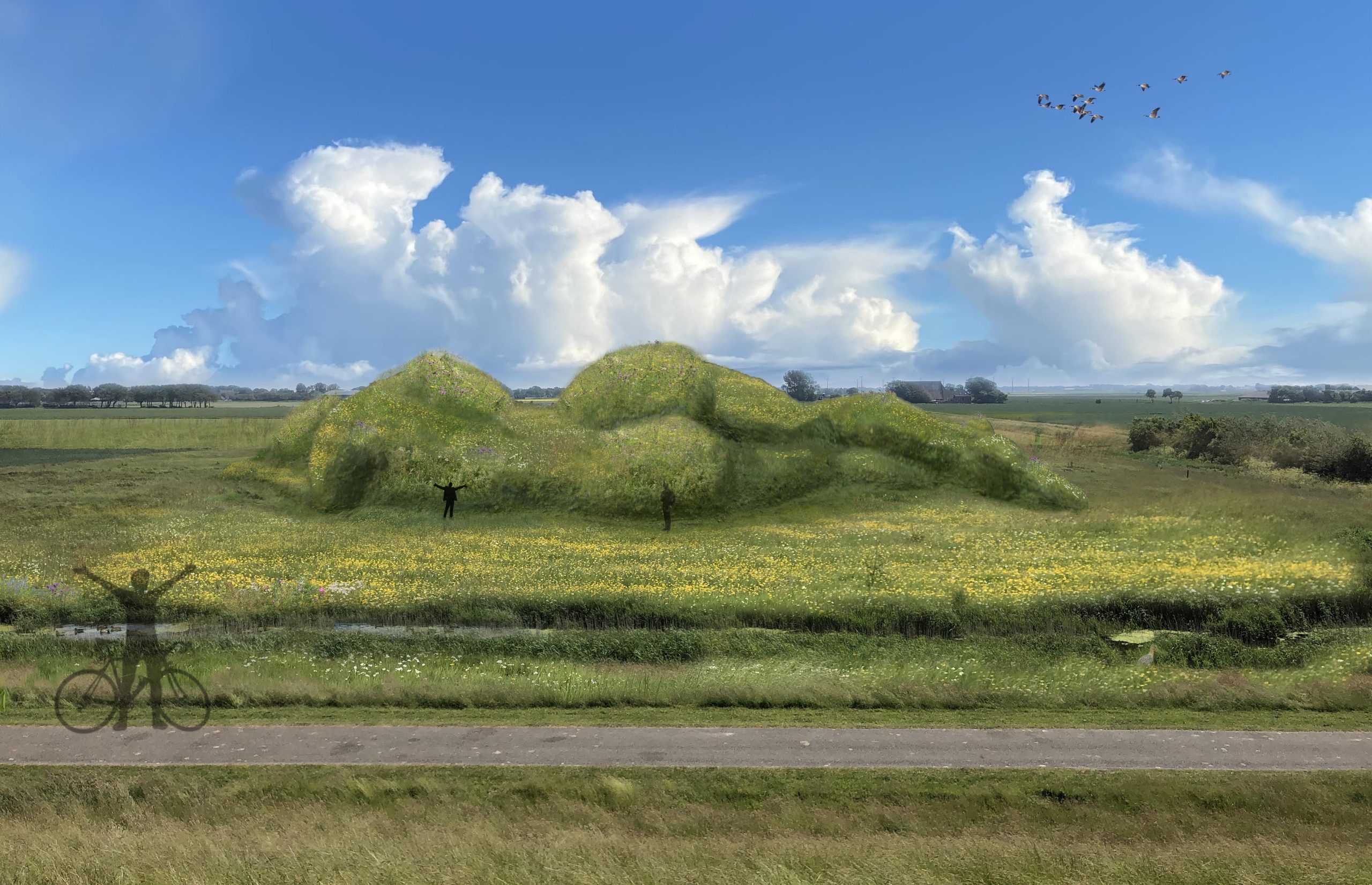
From the dizzying heights of the Camera Batavia watchtower – located on the Waddendijk dike near the Frisian village of Ternaard – you will observe the view from all directions through the unique perspective of a vortex mirror. It’s a disorienting and new experience that will offers a new, refreshing take on the landscape.
Test versions of the Camera Batavia tower were previously on display at the 2015 and 2016 editions of the annual Oeral festival on the island of Terschelling. The final version of the tower will be erected in Ternaard in 2019. You can experience the mirror image from the tower both on sofas in the exterior space and from the closed interior space (similar to a camera obscura).
Born in the Frisian town of Heerenveen in 1967, Arjen Boerstra currently lives in the village of Den Horn in Groningen province and works in the city of Groningen. He attended art school at Groningen’s Academie voor Beeldende Kunst Minerva, where he earned his degree in 1993. His work features a combination of installations, video, photographs and performance art.
Boerstra on his Camera Batavia project: ‘I decided to reconstruct the attic room from my childhood as a type of memory exercise and also to revisit some of the things that used to fascinate me as a child. I was an inquisitive and creative kid, and it was by rediscovering and observing the world around me that I got to recreate some of those early experiences.
The work should be regarded as an invitation to view the environment or a particular situation from a fresh and different perspective.’
Realisation: 2020/2021
Location: Ternaard

The Kromme Horne has it all: an abundance of light, vastness, serenity and spectacular panoramas. If you enter this curved pier at the village of Wierum, you will find yourself surrounded by hollows, salt marshes and plates, accompanied by the infinite light. At the end, like a ship on the horizon, you will spot a sculpture. Go on board and wander through the halls, whose windows will lead you to destinations unknown…
A curved 550-metre pier will run along the dike near the village of Wierum in the future. Visitors can walk across the pier, which runs mostly along the old pier and protects it from further decline. As they walk above the water and the slurry and along three panoramic views and dwellings, they experience the beauty of this unique landscape. The sculpture appears like a mirage, a ship with the bow turned toward the north: this is where the light is caught in a room – a room which provides protection from the wind and the sun and which entices you to linger or walk out onto the mud flats.
The Kromme Horne landscape object was created by and for people and in harmony with the natural world. The three ‘roundabouts with exits’ represent the spaces where the tide is caught. The leads to the creation of blowholes which – due to the currents – have had their appearance transformed over the decades. The landscape will be home to salt marshes and rift valleys, with mussel beds to be installed at one and vegetation planted at another, while the presence of the pier will also cause the existing salt marshes to grow again.
In an effort to revitalise their village, several of Wierum’s residents decided in 2016 to explore opportunities for new recreational facilities. Many different ideas were proposed and brainstorming sessions were held, including an exchange of ideas and various drawings. It was clear that a spatial element needed to be added to highlight Wierum’s visual qualities: the salt marshes, the mudflats, the endless dikes, the tranquillity, the tide, the colours, the light, the unique history, and the link to local shipping and hiking routes. The visual artist Ruud Reutelingsperger, a member of the Observatorium artist collective, became involved in the initiative, which ultimately resulted in this project.
More information: dorpwierum and observatorium for the great design!
Expected realisation date: unknown
Location: Wierum
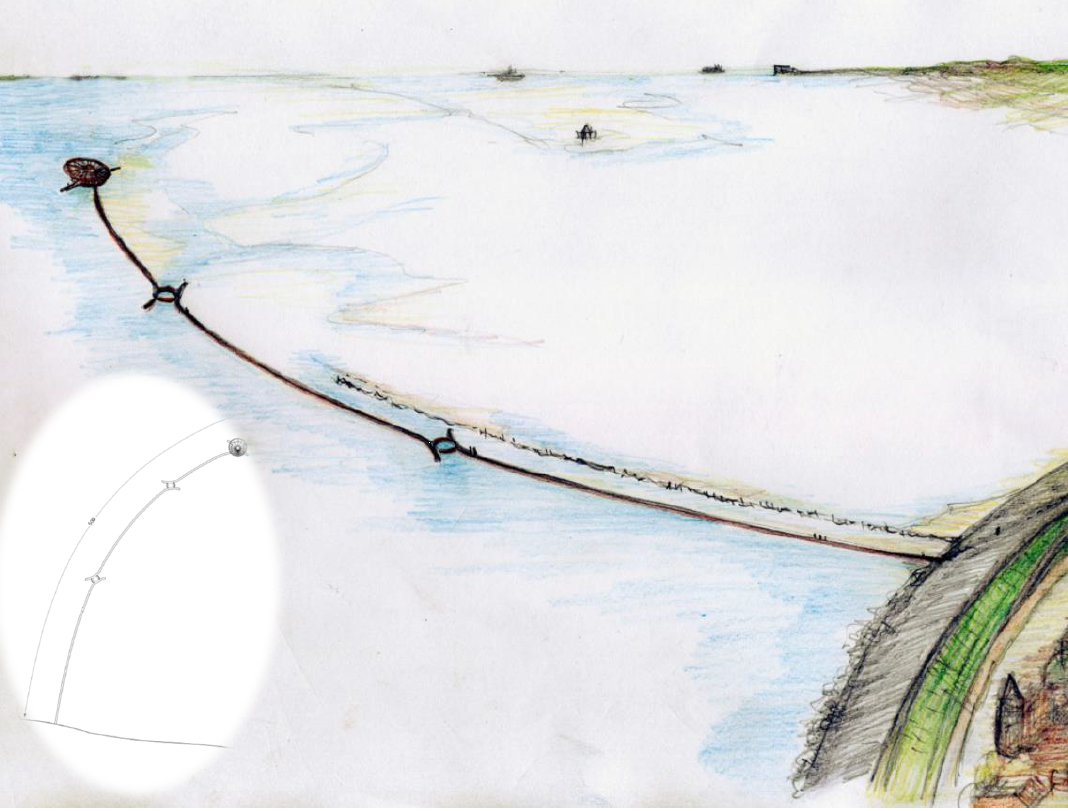
In 2018 Sense of Place presented two exhibitions, both of which opened at venues in Leeuwarden.
At the city’s Aegon building and the De Kanselarij ‘open community’.
In the courtyard of the Aegon building a striking work of art was realized by Sense of Place. In Waterpanorama, the visitor was surrounded by the Wadden area.
An impressive circular structure, 3 meters high (at about the actual height of the Wadden), with a diameter of 20 meters was designed by Alex van de Beld.
An architectural installation where the public can walk through and climb into. On the raised stage you do not find yourself in a literal landscape, but in an abstract view of ebb and flow and the continuous movement of the area. The actual panorama is made by artists Irem Kaneli en Stijn Smit. With mud clay! De amazing soundscape is by Tristan Visser.
Exhibition dates: 12.04.2018 – 25.11.2018
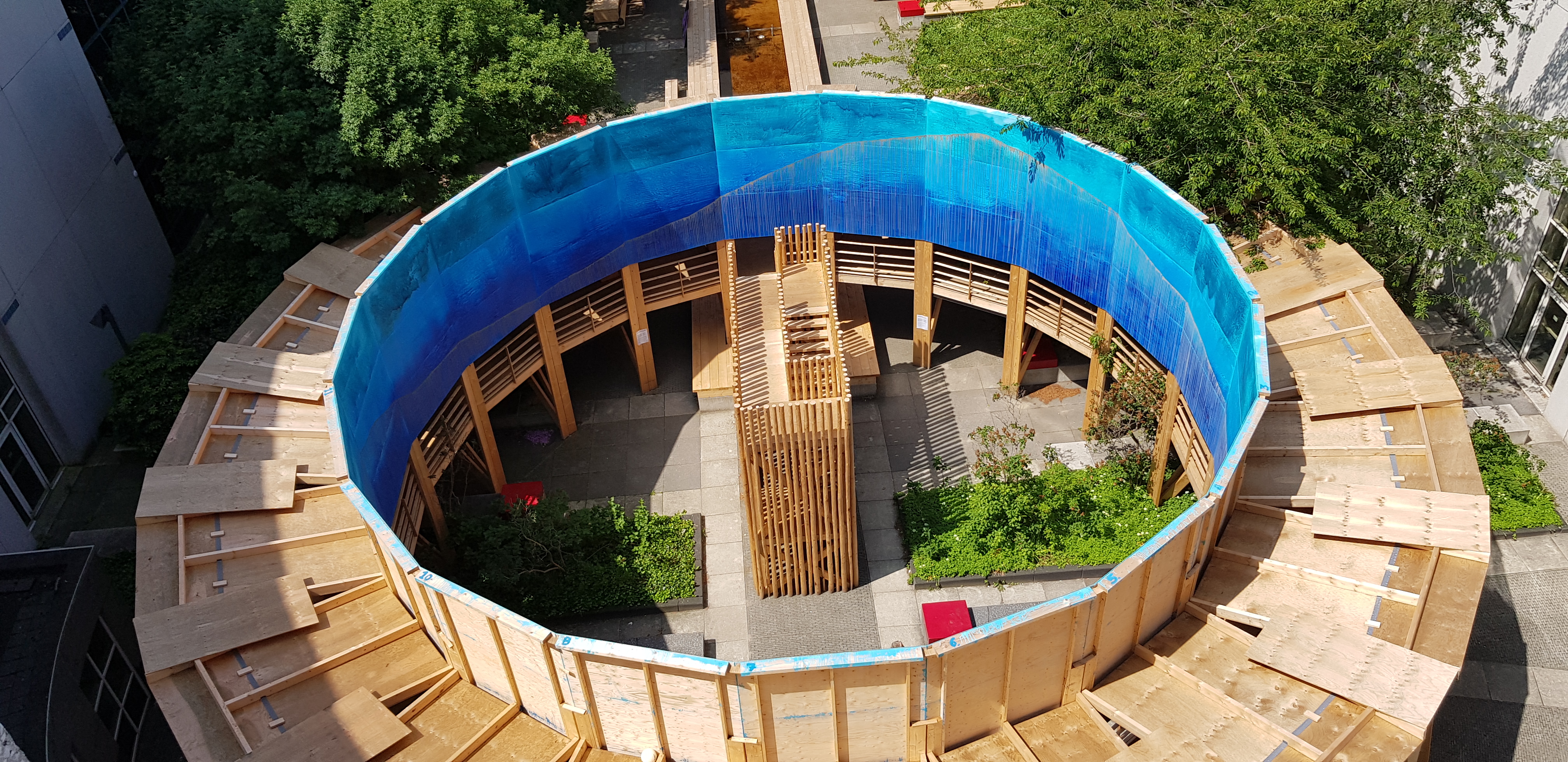
‘Windwork’ is an installation where human actions and forces of nature captivatingly meet each other. Inspired by the metamorphose-drawings by M.C. Escher the geometric landscape of marram grass fields slowly transforms into a dune landscape with natural shapes. With the wind being the most important driving source.
A project, in which research and innovational landscape provides new insides into dune formation and dynamic coastal management. For more information: slem.org
Location
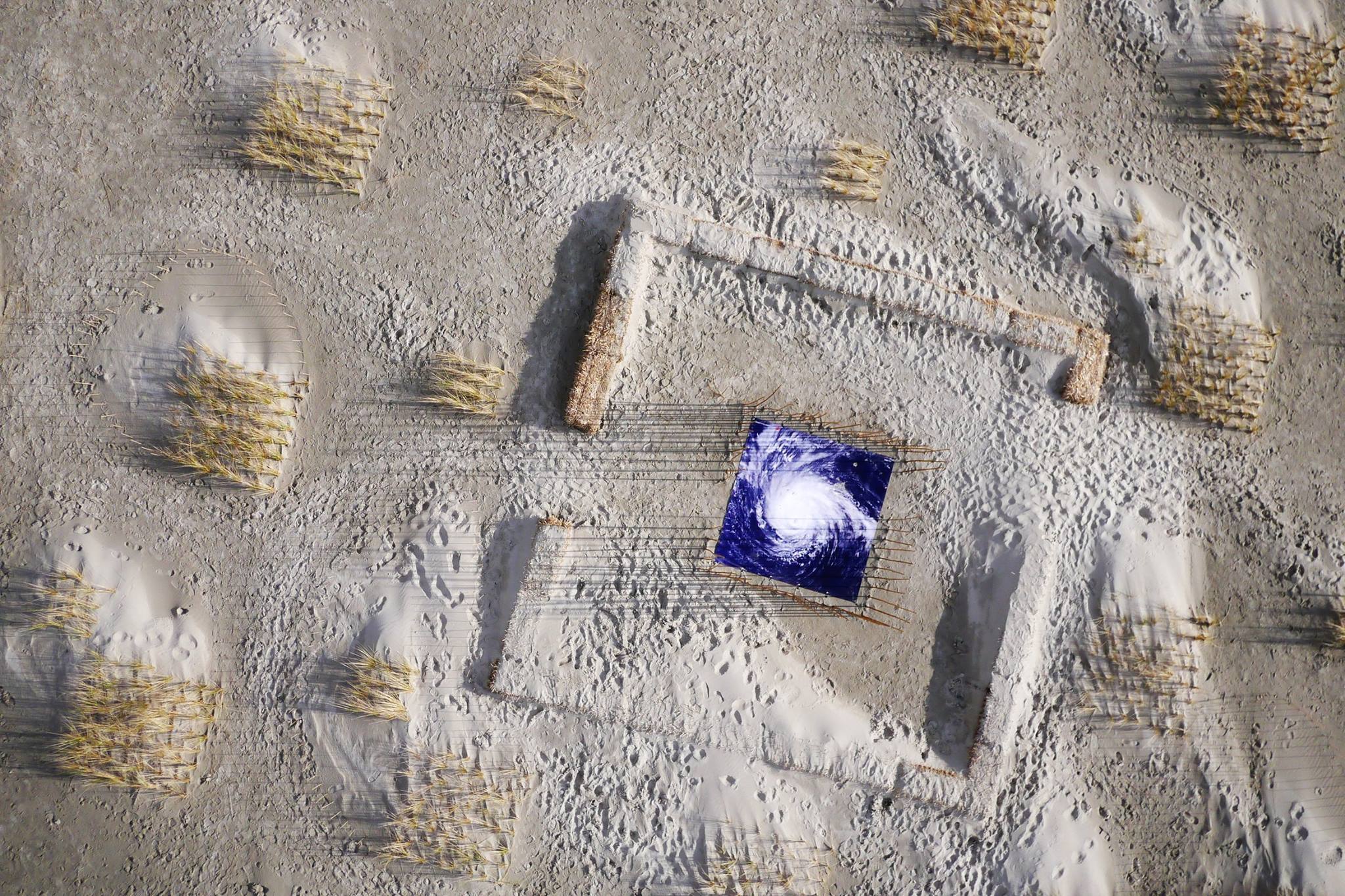
Hoarizonbreed en himelheech is it libben yn Blije.
In the autumn of 2018, Sense of Place, in collaboration with the village of Blije, took visitors along the Wadden coast. With Blije as a stage, ‘Leven onder aan de dijk’ (Living at the bottom of the dike) showed how men and the sea have been evenly matched for centuries. On the one hand, the sea as lord and master, on the other hand, men building a life on gained land.
How did people live along the beautiful but inexorable Wadden coast centuries ago? What can the residents tell us about contemporary life at the bottom of the dike? And what does the future look like according to the experts? With a charming program containing exhibitions and lectures on the development of landscape, climate change etc. ‘Life at the bottom of the dike’ offered something for everyone and people learned more about this beautiful piece of Fryslân.
Location: Blije
Date: November 2018
Leven onder aan de dijk was made possible by:
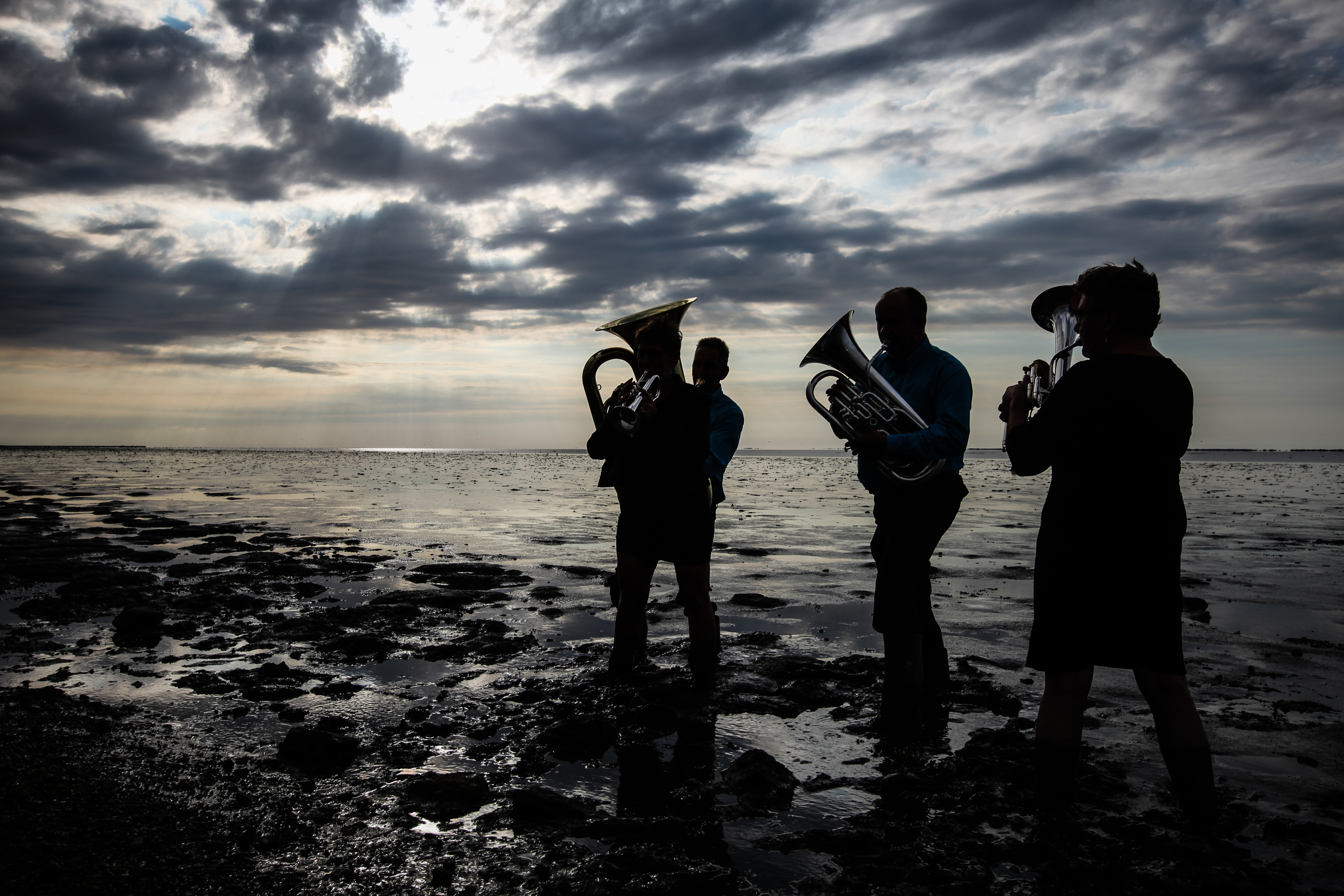
Kerend Tij (Turning Tide)
In 2018 Sense of Place presented two new exhibitions, both of which opened at venues in Leeuwarden. At the city’s Aegon building and the De Kanselarij ‘open community’.
Be amazed by the dynamics of the tide in ‘de Waddenkelder’ (the Wadden Basement): Bare feet in the sand you will experience the cycle of the tide in one minute. An ode to the Wadden Sea: slums, sandbanks, mudflats, beaches and dunes. A dynamic landscape, constantly in motion.
Unique in the world and from 2009 a Unesco World Heritage site.
The Wadden Sea has always been influenced by man. Places of Hope is a wonderful stage for the innovative Sense of Place projects. These projects make it possible to experience the dynamics of the Wadden Sea and its beauty and poetry even more intensely. The projects respect culture and nature and tell the story of the location and the landscape. They give the place extra appeal and meaning: a Sense of Place.
In the Wadden Basement you become aware of the vulnerability, the beauty and the unique character of the ever-changing Wadden Sea landscape.
This project was made possible by ‘Programma naar een Rijke Waddenzee’, the municipality of Leeuwarden and Leeuwarden-Fryslân 2018.
Bruno Doedens (1959) studied at ‘de Academie van Bouwkunst’ in Amsterdam, specialising in Landscape architecture. In 1990 he wins the ‘basisprijs Prix de Rome’ – Landscape architecture. Together with Maike van Stiphout he starts bureau DS in 1993. They win the international contest for designing two parcs at the Potzdamer Platz in Berlin. Both have been realised. In 2005 Doedens continues on his own, from 2007 as initiator and artistic director of Slem. Besides expertise and crafts, the focus in all his projects lies on illusions. The fascination to ‘make the impossible possible’, or ‘to turn water into wine’, and the focus on the long term and the social and cultural values, predominate.
For more information: Bruno Doedens
Exhibition dates: from 04.04.2018 to 25.11.2018
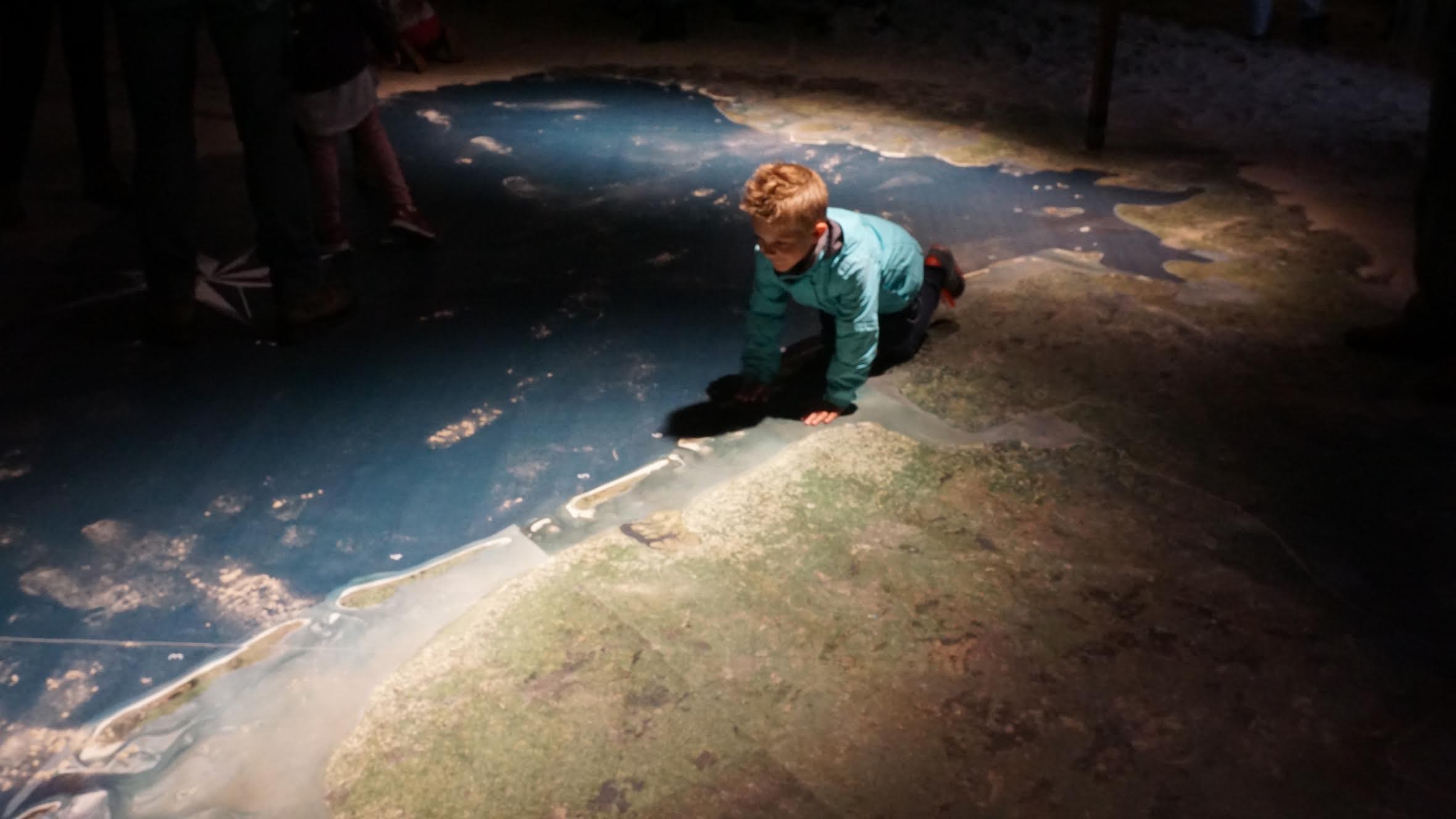
We wolle ús klaai werom (‘we want our clay back’). Few people are aware that a large number of the nearly thousand mounds (terpen) found in Friesland province at one time have been excavated, with the clay being used to enrich the peat soil and sandy soil in more economically disadvantaged areas. Although canals were dug, railway lines installed, and so on, the episode – which involved a massive operation – is barely a footnote in local history books. In order to revive this part of the province’s history, researchers are attempting to establish what happened to the clay, and the local population has been symbolically reclaiming the clay by sourcing it from different areas.
The village of Blije is currently investigating the building of the Terp fan de Takomst (‘Mound of the Future’). In the autumn of 2018, towards the end of year in which Leeuwarden and Friesland are the Cultural Capital of Europe, the village requested all villages and farmers from the North of the Netherlands to return a small shovel or wheelbarrow filled with the ‘relocated’ clay to the village of Blije. This will then be used to ‘plant’ the Terp fan de Takomst, a safe new meeting place outside the dike. The return of the clay was commemorated in a special way.
We wolle ús klaai werom was a one-day event designed to raise awareness of the rich history of the Frisian landscape.
Exhibition date: 17.11.2018

Het Bildt wheat fields art project.
Picture this: summer 2018, wheat fields rippling in the wind in het Bildt; the clay land along the Frisian Waddendijk dike. The sight of drawings by several Bildt-based artists carved into the local wheat fields is nothing short of spectacular on this agricultural land, traversed by the straight lines of dikes, waterways and ditches. A long-time resident of het Bildt, artist Henk Rusman, who conceived the project, creates massive statues of steel and stone patterned on the local scenery. When the artist gazed out across the wheat fields one summer, he had the ingenious idea of creating ‘art in the wheat’. We previously got a taste of this style in 2017, when he and fellow artist Marco Goldenbeld created a work of art inspired by Escher’s ‘impossible cube’. For the 2018 project, Rusman invited several artists from het Bildt to supply designs for his ‘Art in the Wheat Fields’ project. The works were displayed during the Bildtse Aardappel weken (Bildtse Potato Weeks) in 2018.
Born in Hillegom in South Holland province, Henk Rusman attended the Stadsacademie and Jan van Eijck academie, two art colleges located in Maastricht in Limburg province. A long-time resident of het Bildt and renowned in the Netherlands and beyond for his larger-than-life works, he received the Bildtse Kultuurprijs, an award acknowledging contributions to local culture, in 1993.
Date: 21st of June – 5th of August 2018
Location: Between Oude Bildtzijl (Oude Bildtdijk nr. 14) en De Westhoek (Oude Bildtdijk nr 1018) / Ferris wheel: Stadhoudersweg Nij Altoenae.
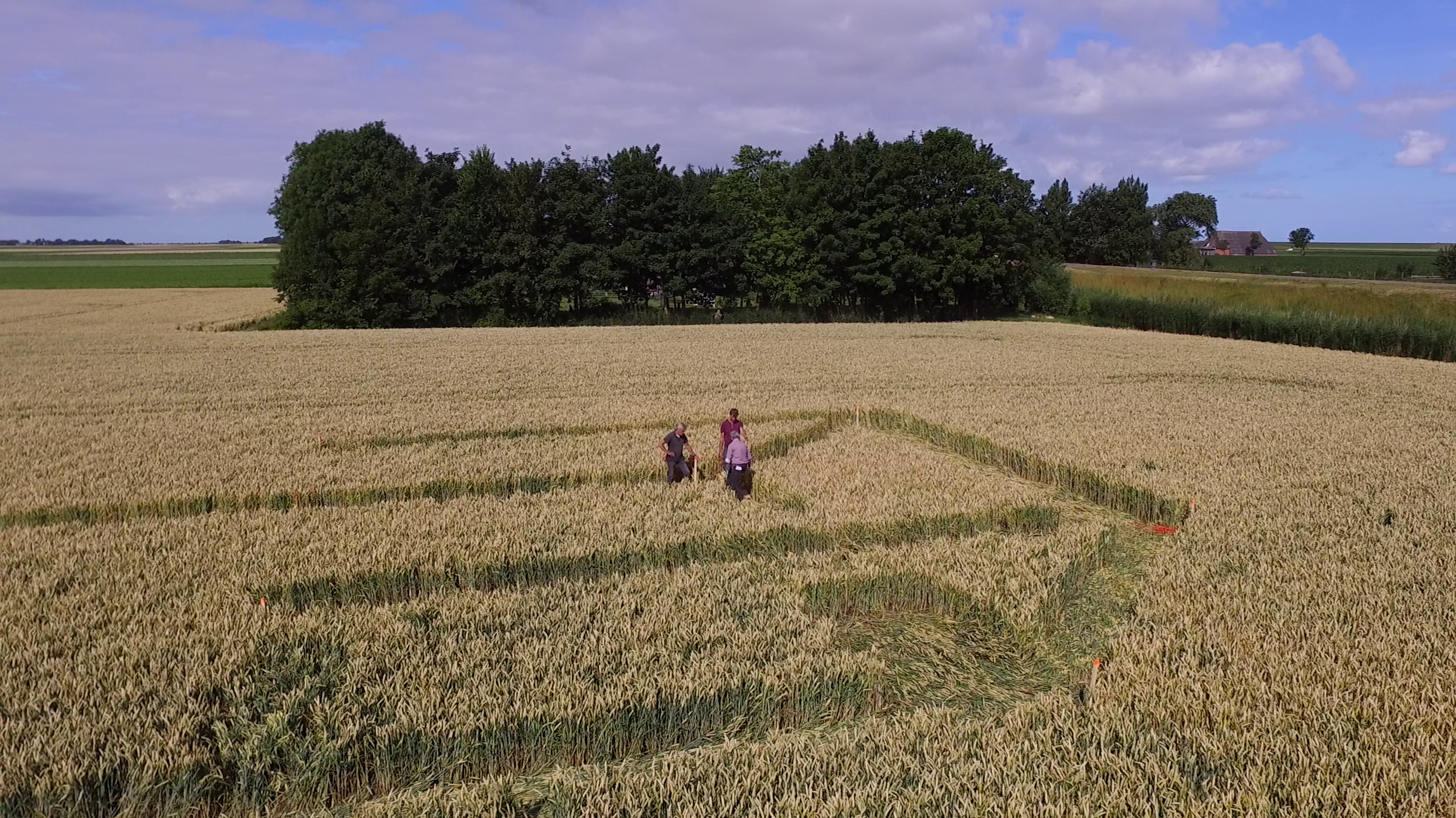
For Oerol 2014, a ‘Mondrians Labyrint’ of one hundred fifty by one hundred fifty meters of willows was built on the Noordsvaarder to turn the process of salt marsh formation into an artistic experience. Only because of the dedication of two hundred fifty students from seven different study programs, and numerous volunteers, this ‘Mondriaans-Labyrint’ was realized during a workshop of 6 weekends.
The reason for drawing attention to the salt marsh formation process were the plans of the municipality of Terschelling for the construction of a new salt marsh, Striep-kwelder.
An outer dike area on the south side of Terschelling. In consultation with Oerol, Bruno Doedens made the design for this. The Wadland Labyrinth is a scale model that aims to clarify the salt marsh formation process to a wide audience and is an initiative from Cultural Landscape Development. Wadland was conceived and developed by Bruno Doedens (SLeM) and Machiel Spaan (M3H). Wadland stayed for four months so that the beginning of the salt marsh formation process could actually be observed.
